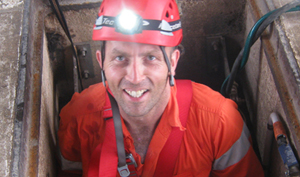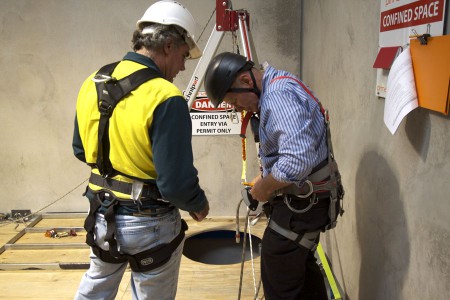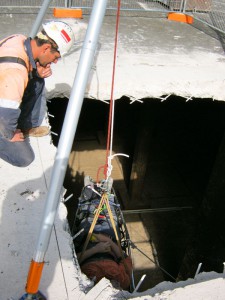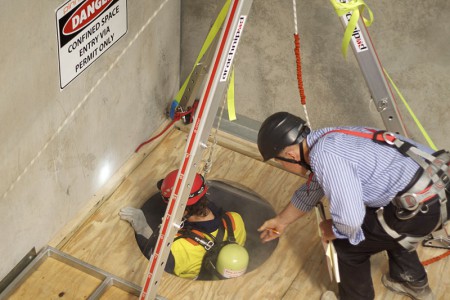No region selected
Confined Space Entry - 2 day
MSMPER205 - Enter confined space
MSMPER200 - Work in accordance with an issued permit
MSMWHS217 - Gas test atmospheres
MSMWHS201 - Conduct hazard analysis
MSMPER300 - Issue work permits
Face to Face
Covers basic confined space entry skills, along with more advanced confined space training, including gas testing and the issuing of confined space entry permits. 100% face-to-face training.

Course Dates
| Location (Regional VIC) | Start Date | Places Left |
|---|---|---|
|
For group bookings please call us on 1300 990 810. |
Course Details
Certification
Course Details
Course duration: 2 days (approximately 8 hours per day)
Up to 12 trainees per course
Price



Course Overview
General Overview
What is a Confined Space?
According to the Safe Work Australia Code of Practice, a “confined space” means an enclosed or partially enclosed space that:
- is not designed or intended primarily to be occupied by a person; and
- is, or is designed or intended to be, at normal atmospheric pressure while any person is in the space; and
- is or is likely to be a risk to health and safety from:
- an atmosphere that does not have a safe oxygen level, or
- contaminants, including airborne gases, vapours and dusts, that may cause injury from fire or explosion, or
- harmful concentrations of any airborne contaminants, or
- engulfment.
Examples of confined spaces include (but are not limited to):
- Storage tanks
- Tank cars
- Process vessels
- Pressure vessels
- Boilers
- Silos and other tank-like compartments
- Pits and degreasers
- Pipes
- Sewers
- Sewer pump stations including wet and dry wells, shafts and ducts
- Shipboard spaces entered through small hatchways or access points, cargo tanks, cellular double bottom tanks, duct keels, ballast or oil tanks and void spaces.
This course is recommended for
Course Outline
- Identifying confined spaces
- WHS legislation, Codes of Practice and Australian Standards relevant to confined spaces
- Roles and responsibilities of management and employees
- Hazard identification, risk assessments and hierarchy of controls
- Issuance of confined space permits
- Work site policy and procedures
- Isolation procedures
- Atmospheric monitoring and gas detection
- Working at height and fall protection equipment
- Safety and emergency procedures
- Practical entry into a confined space
- Identifying confined spaces
- OHS legislation, Compliance Codes and Australian Standards relevant to confined spaces
- Roles and responsibilities of management and employees
- Hazard identification, risk assessments and hierarchy of controls
- Issuance of confined space permits
- Work site policy and procedures
- Isolation procedures
- Atmospheric monitoring and gas detection
- Working at height and fall protection equipment
- Safety and emergency procedures
- Practical entry into a confined space
Currency of Training
Australian Standard AS2865 recommends refreshing confined space training every 12-24 months.
Course Inclusions
Each Trainee Must Provide
I wanted to drop you a line and mention how well run the course was. Travis knew his subject, he was easy to understand, his course was very well delivered and we all enjoyed the day.
Colin M. - Melbourne, VIC
AGL
I did the two day course and was my first time doing confined space certificate. For the course, l had two different instructors and the information at hand was a lot to take in, but was made easier by the way the instructors conducted the course. I really thought the practical exercises were a great way of understanding everything learnt in the classroom. I would have no reservations in doing another course with you nor recommending others to undertake courses with you as l honestly enjoyed myself.
Alan W. - Melbourne, VIC
HCC Haulage ConcreteStudent Links
I found Kerryn to be an excellent trainer and presenter who was able to share her industry experience well. The fact that she regularly provides Confined Spaces services to industry reflects well.
